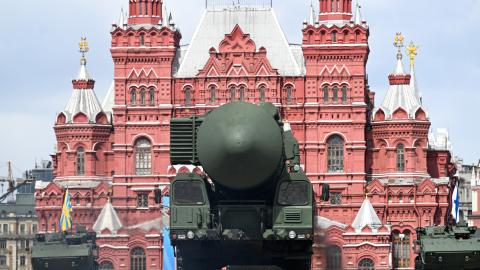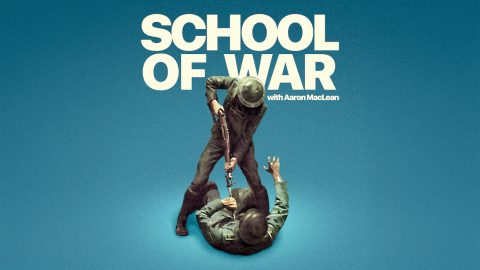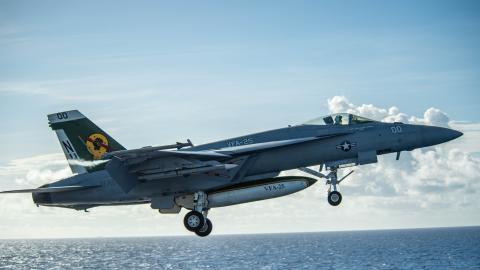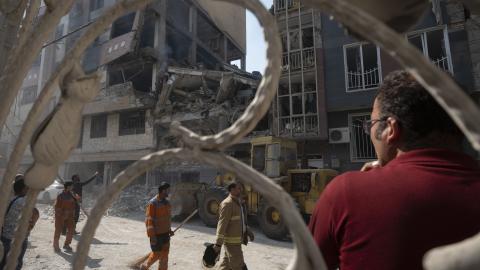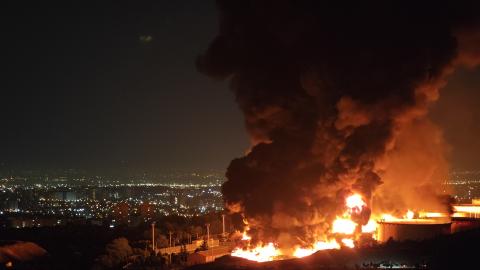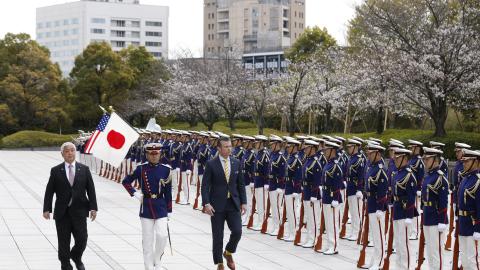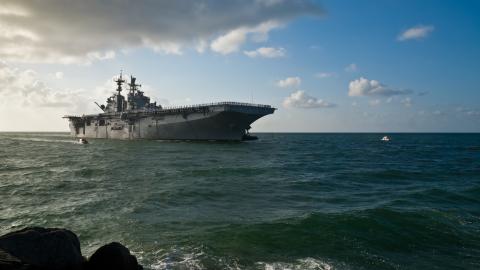Introduction
The US Navy has spent the last decade attempting to pivot from efficiently maintaining the post–Cold War peace to effectively preventing and fighting a war against China or Russia. The circa-2000 Navy faced pervasive low-end threats from terrorists, insurgents, and regional opponents; today it is up against great power adversaries who used the past twenty years of relative stability to modernize and expand their fleets. The People’s Liberation Army (PLA) Navy is now larger than its American counterpart and is narrowing the US Navy’s capability advantages.1 Russia’s Navy, while smaller than that of the United States or China, boasts some of the most capable submarines in the world and hypersonic missile-equipped frigates.2
Proliferation of computing, sensing, material, and countermeasure technologies has leveled the playing field for military capability development. Building faster, more precise, stealthier, or smarter ships, aircraft, and weapons than opponents⎯the US Navy’s playbook since the Cold War⎯will no longer yield substantial or persistent advantages. The Navy will need to continue pursuing improved capabilities, but regaining and maintaining an edge against Chinese and Russian forces will depend as much or more on the US fleet establishing new operational concepts and tactics that exploit its strengths and its enemies’ vulnerabilities.3
The need for new concepts is widely acknowledged by Navy leaders. The surface Navy’s strategy, Surface Warfare: The Competitive Edge, includes as one of its five lines of effort the creation of clear and innovative operational concepts.4 It joins previous vision and strategy documents from the air and undersea communities in arguing for the importance of operational innovation. Each naval warfare community incorporates organizations and processes for tactical improvement that provide guidance and inform training and certification at the squadron or wing level.
But gaining an advantage against Chinese or Russian fleets will take more than fighting effectively at the level of individual ships, squadrons, or ground units. US naval forces will likely be the “away team” in confrontations against the PLA or Russian Federation (RF) military, placing them at a disadvantage in terms of firepower, sustainment, and sensing. Add to that the near parity of opposing platforms and weapons, and the US fleet will be hard-pressed to win via a series of one-on-one engagements. Navy and Marine Corps platforms and formations will need to employ new force-level approaches to counter “home team” opponents.
The Navy’s Distributed Maritime Operations (DMO) concept, Marine Corps concepts for stand-in forces and Expeditionary Advanced Base Operations (EABO), and the Joint Staff’s Joint Warfighting Concept (JWC) offer a starting point for gaining an edge at the operational or theater level. Some of these concepts are classified, but unclassified discussion of them by service leaders and academics suggests they all plan to use distribution and mobility to improve the US military’s survivability, and agile command and control (C2) relationships to coordinate actions despite degraded communications. For example, the JWC, which guides overall US military operations, employs an “expanded maneuver” approach that disaggregates forces for resilience, aggregates their effects on offense, and relies on decision support and interoperability tools from the DOD’s Joint All-Domain Command and Control (JADC2) initiative to build and execute effective force-wide courses of action (COA).6
Even with new force-level concepts, the US military’s disadvantages as the away team will prevent it from deterring or defeating Chinese or Russian aggression through attrition or a salvo competition alone.7 The emphasis of new Pentagon concepts on distribution and mobility, decision support tools, and agile C2 relationships implies they recognize this challenge and are increasingly focused on gaining a decision-making advantage over adversaries rather than wearing them out. By raising the costs and uncertainty associated with most enemy options while expanding the COAs available to US commanders, concepts like DMO, EABO, and the JWC could convince an opponent to seek an off-ramp or an alternative path to its objectives. Under these concepts, for example, transitioning a Chinese or Russian offensive from intense combat to gray-zone incrementalism could be considered a success.
The current tri-service naval strategy, Advantage at Sea, highlights the increasing importance of decision-making to victory in naval warfare, arguing naval forces will need to “sense, decide, and act more quickly and effectively than our adversaries.”8 Notably, the strategy and DOD’s emerging family of operational concepts point to the need for both better and faster decisions. Although building and executing COAs more quickly than an opponent may be sufficient to win a symmetrical battle between comparable forces, asymmetric actions like distribution, deception, and stand-in operations would be needed to undermine the assumptions and planning associated with enemy decision-making processes.
Implementing new concepts like DMO, EABO, and the JWC will require units to employ different individual and group tactics, techniques, and procedures (TTP) from those they used for twenty years while fighting in the Middle East or surveilling Russia and China. Although naval forces train and test before deployment against simulated and real aggressors that represent peer adversaries, these events are by necessity relatively small engagements. As a result, they tend to reinforce traditional approaches to defend, attack, and conduct C2 of forces rather than providing a venue for executing new concepts that rely on widely distributed forces supporting one another across domains to gain a decision-making advantage.
The most important new TTPs are those for C2 and communications (C3) that shift command relationships based on communications availability rather than attempting to build a network that can support a desired C2 structure under any level of enemy interference. This approach is consistent with the US military’s concept of mission command but will depend on new decision-support tools that enable field commanders to manage their new ad-hoc force after losing communications with the Maritime Operations Center and its planning staff.9
Beyond C3, naval forces will need new TTPs that focus on gaining decision-making advantage in missions such as intelligence, surveillance, reconnaissance, and targeting (ISRT); counter-ISRT; air and missile defense (AMD); anti-submarine warfare (ASW); land and maritime strike; amphibious operations; and mine warfare (MIW).10 Naval forces have executed these missions for decades or centuries, but in a fight against the PLA Navy close to China, the metrics they rely on should change to reflect the centrality of decision-making to military success under the joint force’s new concepts. Specifically, instead of solely pursuing lethality or survivability, naval forces and their TTPs should be assessed in terms of the scale and tempo of actions they can achieve and the number of options they can generate for US commanders or foreclose for opponents.
For example, US ASW missions today start with cueing from intelligence sources, such as electronic intelligence (ELINT) satellites that indicate a submarine is leaving port. Sensors such as the Sound Surveillance System (SOSUS) may then track the submarine making its way toward open ocean, where P-8A patrol aircraft would monitor the submarine’s progress using sonobuoys. The submarine would then be turned over to another surveillance platform, such as a US nuclear attack submarine (SSN) or guided missile destroyer (DDG).11 If rules of engagement allow, the P-8A or SSN could attack the enemy submarine. This approach is sustainable and affords training opportunities in peacetime, but it is not scalable during wartime when more enemy submarines would deploy and P-8As or DDGs are needed for other roles, such as surface warfare or air defense. The end result would be fewer options for US commanders and a slower operational tempo, reducing opportunities to gain a decision-making advantage.
In addition to being unable to scale with the size or capability of the PLA or RF Navy undersea fleets, respectively, today’s US ASW TTPs fail to exploit the slow speed, modest defenses, and short-range sensors of submarines. ASW forces could take advantage of these weaknesses by continuously prosecuting enemy submarines once detected using even relatively ineffective weapons, such as small torpedoes or depth bombs. Because they could not stand and fight like a surface combatant or easily evade attacks like an aircraft, submarines would remove themselves from the fight to regain their stealth. This decision-centric ASW TTP could be affordably conducted by unmanned systems, freeing up manned US ships and aircraft for other COAs like stopping a PLA amphibious invasion fleet.12
New TTPs like the ASW concept above would emphasize metrics of sustainability, resilience, and adaptability more than traditional metrics like lethality and survivability. Although destroying the enemy and defending against attacks will continue to be important, these metrics would likely be viewed under the JWC, DMO, or EABO as necessary but not sufficient.13
The changing metrics associated with military success reflect the disruptive nature of new operational concepts being pursued by the US military. Implementing these concepts throughout deployed US forces will require a substantial training and evaluation effort. However, portions of the Navy have failed to maintain adequate levels of proficiency in basic mariner skills, much less in the advanced TTPs necessary to defeat China or other capable adversaries.14 In part, this is because the Navy and Department of Defense’s (DOD) force generation processes constrain the time available for training and because the Navy lacks sufficient ranges, facilities, and opposition forces (OPFOR).15
More concerning than the Navy’s training shortfalls is what they portend for the fleet’s ability to learn.16 Concepts like MDO, EABO, and the JWC are likely not the final answer on how to counter the advantages of China or Russia. They will need to be refined through experimentation and analysis, with the results rolled into the next generation of TTPs that are then implemented throughout the fleet. Or these decision-centered approaches could be superseded entirely as new technologies enable a return to more attrition-focused concepts⎯as when networked precision weapons at the end of the Cold War offered US forces the possibility of destroying Warsaw Pact targets instead of having to rely on the threat of nuclear weapons to deter Soviet aggression. Recognizing and responding to these kinds of changes will require the Navy to learn, which its current shortfalls in training, experimentation, concept development, and assessment will preclude.17
To enhance the proficiency of its force and unleash the creative potential of its sailors, the Navy should establish a virtuous cycle of operational learning. This will require organizational changes to generate opportunities and strengthen the relationship between warfighting concept development, experimentation, and training or exercise curricula. This paper reviews Navy strategy, identifies challenges in contemporary training, discusses key elements of a learning organization, and proposes approaches the Navy could adopt.
Navy accidents and deficiencies over the past decade have exposed the vital importance of training, while the aggressive actions of China and other adversaries demand a leading naval force that experiments and adopts new concepts and capabilities. To field a force that prevails across the continuum of competition, the Navy can no longer defer prioritization of training and experimentation. The time for reforms is now.
